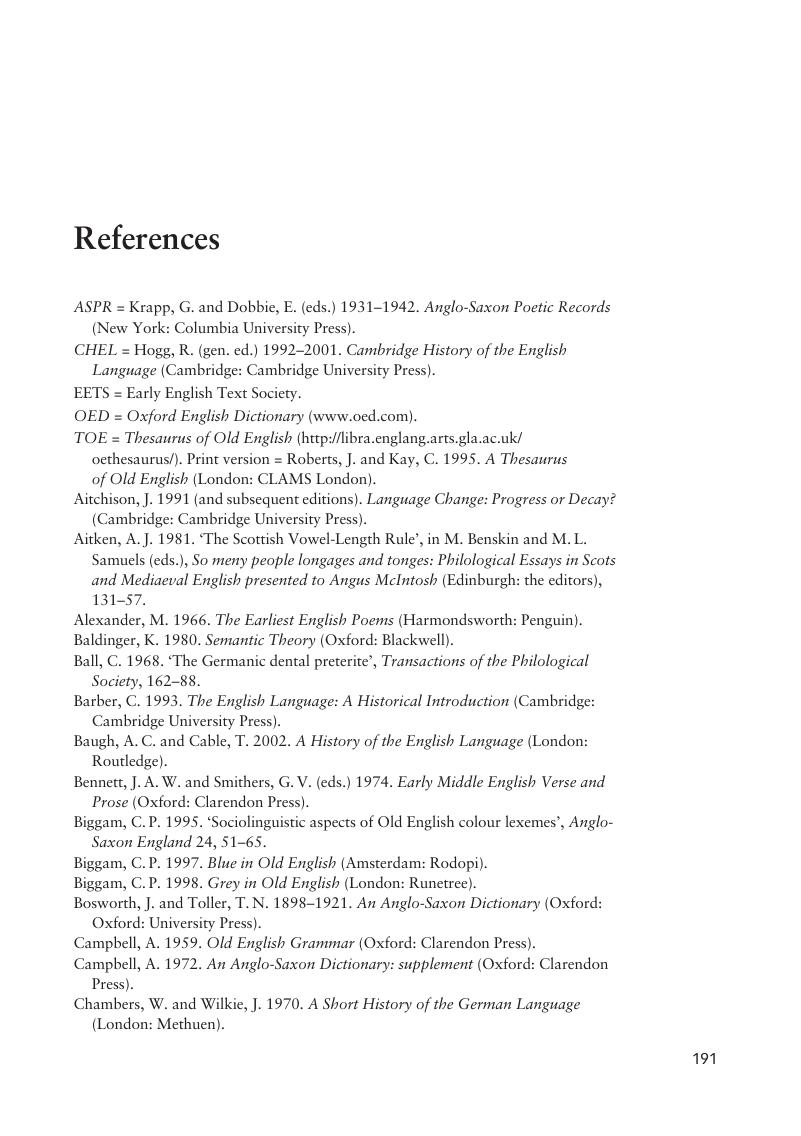Book contents
- Frontmatter
- Contents
- List of Figures
- Preface
- Notations and Conventions
- 1 About Old English
- 2 Describing Language
- 3 The Structure of Old English
- 4 Spellings and Sounds
- 5 The Old English Lexicon
- 6 Old English Grammar I: Syntax
- 7 Old English Grammar II: Inflexional Morphology
- Appendix 1 Texts
- Appendix 2 Discussion Questions and Further Reading
- Glossary of Old English–Present-Day English
- Glossary of Key Terms
- References
- Index
- References
References
Published online by Cambridge University Press: 05 June 2012
- Frontmatter
- Contents
- List of Figures
- Preface
- Notations and Conventions
- 1 About Old English
- 2 Describing Language
- 3 The Structure of Old English
- 4 Spellings and Sounds
- 5 The Old English Lexicon
- 6 Old English Grammar I: Syntax
- 7 Old English Grammar II: Inflexional Morphology
- Appendix 1 Texts
- Appendix 2 Discussion Questions and Further Reading
- Glossary of Old English–Present-Day English
- Glossary of Key Terms
- References
- Index
- References
Summary

- Type
- Chapter
- Information
- Old EnglishA Linguistic Introduction, pp. 191 - 194Publisher: Cambridge University PressPrint publication year: 2009

